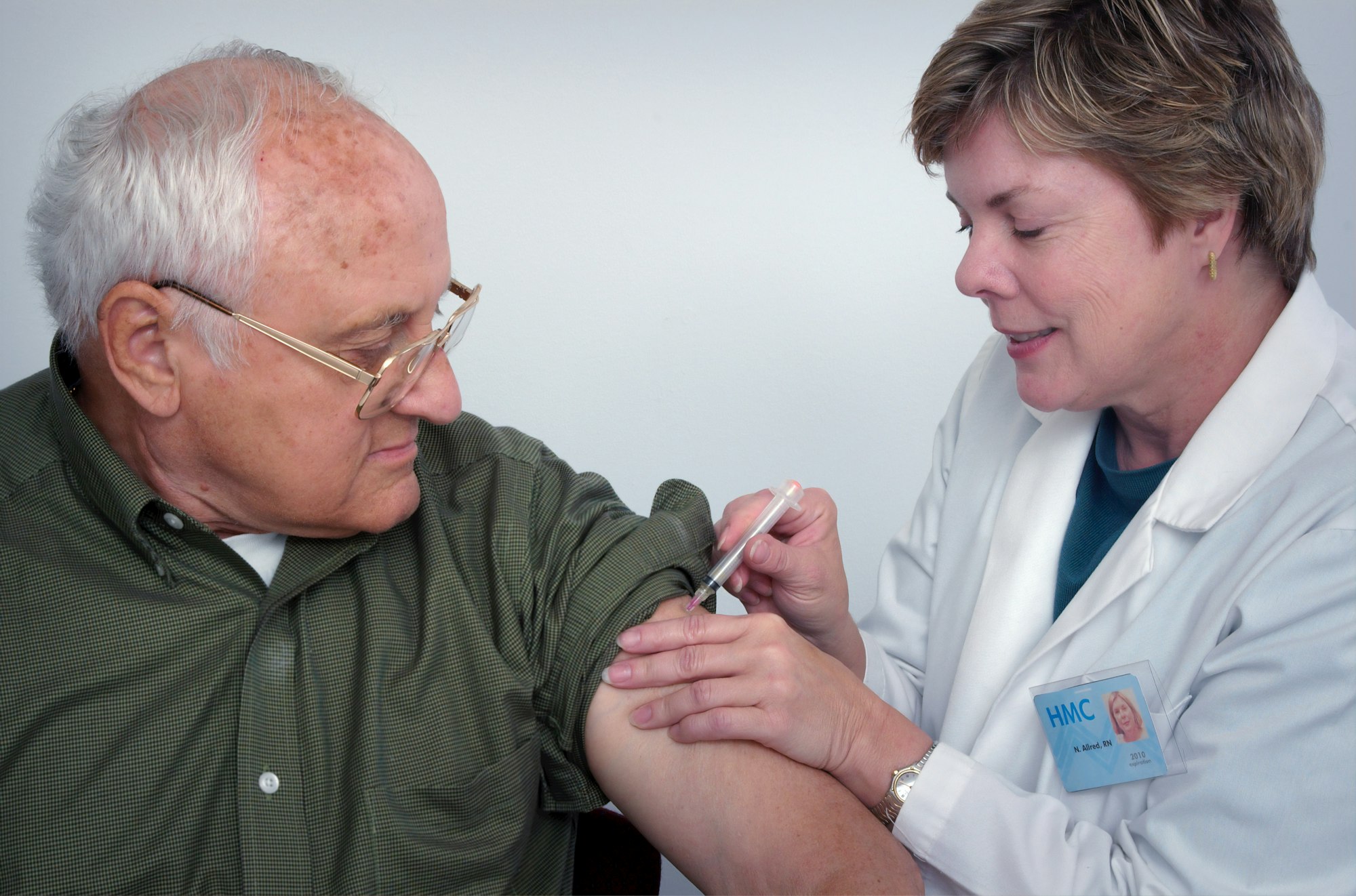United Healthcare's 2025 Specialty Drug Coverage: How the $2,000 Cap Changes Access to High-Cost Medications

For millions of Americans with serious health conditions, specialty medications represent both a lifeline and a financial burden. These high-cost drugs, often used to treat cancer, multiple sclerosis, rheumatoid arthritis, and other complex conditions—can cost thousands of dollars per month, putting them out of reach for many patients despite having insurance coverage.
In 2025, a landmark change is reshaping prescription drug coverage for Medicare beneficiaries, including those with UnitedHealthcare Medicare Advantage and Part D plans. The implementation of the Inflation Reduction Act's $2,000 annual out-of-pocket maximum for prescription medications represents the most significant reform to Medicare drug coverage in nearly two decades.
For patients taking specialty medications, this cap could mean the difference between accessing life-saving treatment and facing impossible financial choices. This comprehensive guide explains how UnitedHealthcare is implementing these changes, what they mean for patients on specialty medications, and how to navigate the new system to maximize your benefits.

Medicare Part D Specialty Drug Changes at United Healthcare in 2025
The New $2,000 Out-of-Pocket Maximum for Specialty Medications
Starting January, UnitedHealthcare Medicare plans, along with all Medicare Part D plans, must implement a $2,000 annual out-of-pocket maximum for prescription medications. This revolutionary change eliminates the coverage gap (commonly known as the "donut hole") and significantly reduces the maximum amount beneficiaries must pay for their medications each year.
According to the Centers for Medicare & Medicaid Services (CMS), "This historic change will provide substantial financial relief for Medicare beneficiaries with high prescription drug costs." Previously, some patients faced catastrophic-phase spending with 5% coinsurance that had no upper limit, potentially resulting in thousands of dollars in out-of-pocket costs for specialty drugs.
UnitedHealthcare's implementation of this cap means that once you've spent $2,000 out-of-pocket on covered medications (including any deductible), you'll pay nothing for your covered prescriptions for the remainder of the calendar year. This is particularly significant for specialty drugs, which often hit this threshold within the first month or two of the year.
Which High-Cost Conditions Benefit Most from United Healthcare's Cap
Patients with certain medical conditions requiring specialty medications will see the most dramatic financial benefits from the new cap. According to research from the Kaiser Family Foundation, Medicare beneficiaries taking medications for the following conditions often faced the highest out-of-pocket costs:
- Cancer treatments: Oral chemotherapy and targeted therapies
- Multiple sclerosis drugs: Disease-modifying therapies
- Immunological conditions: Biologics for rheumatoid arthritis, psoriasis, and Crohn's disease
- Hepatitis C antivirals: Direct-acting antiviral treatments
- Pulmonary arterial hypertension medications: Endothelin receptor antagonists and prostacyclin analogs
A Journal of the American Medical Association (JAMA) study found that under the previous system, Medicare beneficiaries taking specialty-tier drugs spent an average of $6,400 annually out-of-pocket—more than three times the new maximum.
UnitedHealthcare members with these conditions will now have predictable annual maximum costs, regardless of the list price of their specialty medications.
Financial Impact Analysis: Before vs. After the $2,000 Medicare Part D Cap

Calculating Annual Savings for Common Biological Medications
To understand the magnitude of these changes, consider the financial impact for patients taking common biological medications through UnitedHealthcare Medicare plans:
Before the $2,000 cap (2024):
- A patient taking Humira (adalimumab) for rheumatoid arthritis could face up to $8,000 in annual out-of-pocket costs
- A patient on Revlimid (lenalidomide) for multiple myeloma might pay over $14,000 annually
- A patient using Copaxone (glatiramer acetate) for multiple sclerosis could experience $7,200 in yearly costs
After the $2,000 cap (2025):
- All these patients will pay a maximum of $2,000 per year for their medications
- Savings range from $5,200 to over $12,000 annually
- Patients reach catastrophic coverage (zero cost-sharing) much earlier in the year
According to the American Society of Clinical Oncology, "These reforms will help ensure that cancer patients can afford their medications and comply with treatment regimens, ultimately improving outcomes."
The most significant savings will occur for patients who previously entered the catastrophic phase and continued paying 5% coinsurance throughout the year—which for high-priced specialty drugs could amount to hundreds or thousands of dollars monthly.
Month-by-Month Cost Comparison for Top Specialty Drugs Under UHC Plans
Understanding how costs distribute throughout the year helps patients plan financially. Here's how monthly out-of-pocket expenses compare before and after the $2,000 cap for a UnitedHealthcare Medicare member taking a specialty drug with a retail price of $7,000 per month:
2024 (Before Cap):
- January: $595 (deductible + initial coverage coinsurance)
- February: $875 (entering coverage gap)
- March: $875 (coverage gap continues)
- April: $875 (entering catastrophic coverage)
- May-December: $350 per month (5% catastrophic coinsurance)
- Total annual out-of-pocket: $6,370
2025 (With $2,000 Cap):
- January: $595 (deductible + initial coverage coinsurance)
- February: $875 (reaching $2,000 maximum)
- March: $530 (remaining portion to reach $2,000)
- April-December: $0 (maximum reached)
- Total annual out-of-pocket: $2,000
This example demonstrates how patients with high-cost specialty medications will reach their maximum out-of-pocket much earlier in the calendar year. In many cases, patients will pay nothing for their medications for most of the year after reaching the $2,000 threshold.
United Healthcare's 2025 Specialty Tier Structure and Prior Authorization Changes
Updated Prior Authorization Requirements for High-Cost Medications
While the $2,000 cap represents extraordinary financial relief, UnitedHealthcare has simultaneously updated its prior authorization requirements for many specialty medications. According to our analysis of UnitedHealthcare's 2025 formulary changes:
- More medications require prior authorization: The number of specialty drugs requiring prior authorization has increased by approximately 15%
- Clinical criteria updates: Many existing medications have more specific clinical criteria for approval
- Expanded documentation requirements: More detailed documentation of previous treatment failures is now required for many second-line therapies
These changes appear to be part of UnitedHealthcare's strategy to manage the increased costs associated with the new $2,000 cap. As the National Academy for State Health Policy notes, "Insurers may implement more stringent utilization management as they adapt to the new cost structures."
To navigate these stricter requirements, patients should:
- Start authorization processes early (at least 3-4 weeks before needing a refill)
- Work closely with prescribing physicians to ensure all clinical documentation is thorough
- Keep copies of all authorization approvals and supporting documentation
New Step Therapy Protocols for Specialty Drugs at United Healthcare
UnitedHealthcare has also expanded its step therapy requirements for several classes of specialty medications. Step therapy requires patients to try preferred (often less expensive) medications before covering the prescribed drug.
For 2025, UnitedHealthcare has implemented stricter step therapy protocols for:
- TNF inhibitors for autoimmune conditions
- CGRP inhibitors for migraine
- JAK inhibitors for rheumatoid arthritis
- Newer MS therapies
- Oral oncology medications in several categories
An American Medical Association survey found that 93% of physicians report care delays associated with prior authorization, and 34% report that these requirements have led to serious adverse events for patients.
If you're currently stable on a specialty medication, UnitedHealthcare will generally continue coverage without requiring you to try alternatives. However, new prescriptions may need to follow step therapy protocols unless your physician successfully requests an exception.
How to Access Catastrophic Coverage Faster for United Healthcare Specialty Medications

Maximizing Manufacturer Assistance Programs with the $2,000 Cap
Many specialty drug manufacturers offer assistance programs to help with out-of-pocket costs. However, a critical policy change affects how these programs interact with the $2,000 cap in UnitedHealthcare Medicare plans.
Under CMS regulations, manufacturer assistance programs generally do not count toward your out-of-pocket maximum in Medicare Part D plans. This "accumulator" policy means only what you personally pay counts toward reaching the $2,000 threshold.
However, patient assistance from other sources may count toward your out-of-pocket maximum:
- State pharmaceutical assistance programs (SPAPs)
- AIDS Drug Assistance Programs (ADAPs)
- Indian Health Service (IHS)
- Some charitable foundations (varies by program)
To optimize your approach:
- Apply for assistance from qualified charitable foundations first
- Use manufacturer programs for costs that won't count toward your maximum
- Time your applications strategically throughout the year
According to the Patient Advocate Foundation, "Understanding which assistance programs count toward your out-of-pocket maximum is crucial for minimizing total annual costs."
United Healthcare's New Monthly Payment Plan for Specialty Tier Drugs
Another significant change for 2025 is UnitedHealthcare's implementation of the Medicare Prescription Payment Plan (MPPP), which allows beneficiaries to spread their drug costs throughout the year. This optional program can be particularly valuable for patients with high upfront specialty drug costs.
Instead of paying large amounts in the first months of the year until reaching the $2,000 maximum, enrollees can opt to pay approximately $167 monthly until reaching the cap. For specialty drug users, this smooths out expenses and improves cash flow.
Important considerations for this payment option:
- Enrollment is voluntary but must be requested
- Monthly amounts may vary based on your specific prescriptions
- You'll receive a monthly bill rather than paying at the pharmacy
- You still reach the $2,000 cap at the same point, but with smaller monthly payments
For detailed information on enrollment, contact UnitedHealthcare's Medicare Customer Service at the number on your member ID card.
Disease-Specific Guide to United Healthcare 2025 Specialty Drug Coverage

United Healthcare Cancer Drug Coverage After Medicare Part D Changes
Cancer patients face unique challenges with specialty medications, and UnitedHealthcare's implementation of the $2,000 cap provides substantial relief. For oral chemotherapy and targeted therapies, patients previously faced thousands in out-of-pocket costs even after reaching catastrophic coverage.
A National Cancer Institute study found that 25% of cancer patients depleted their savings to pay for treatment, and 11% were unable to afford basic necessities due to treatment costs. The new cap directly addresses this "financial toxicity."
For UnitedHealthcare Medicare members with cancer:
- Oral chemotherapy drugs will remain in the specialty tier but with the $2,000 maximum protection
- Prior authorization requirements continue for most targeted therapies
- Quantity limits remain for certain medications to align with FDA dosing
- Off-label uses may still require exception requests with clinical evidence
To maximize coverage:
- Work with oncology financial navigators if available at your treatment center
- Apply for cancer-specific assistance programs like the CancerCare Co-Payment Assistance Foundation
- Request 90-day supplies when appropriate to minimize refill logistics
MS, RA, and Immunological Condition Medication Costs Under New $2,000 Cap
Patients with multiple sclerosis, rheumatoid arthritis, and other immunological conditions often rely on biologic medications with extremely high price tags. The $2,000 cap transforms the financial landscape for these patients.
UnitedHealthcare's 2025 approach to these conditions includes:
- Maintained specialty tier placement for most biologics
- Updated step therapy requirements for several newer agents
- Expanded prior authorization criteria with more specific failure parameters
- Infused biologics continue under Medicare Part B (not subject to the Part D cap)
The Multiple Sclerosis Association of America reports that MS patients on disease-modifying therapies often spent between $6,000-$8,000 annually out-of-pocket before the cap. Reducing this to $2,000 represents extraordinary relief.
For patients with these conditions, we recommend:
- Review medication synchronization to consolidate specialty refills
- Investigate administration options (self-administered vs. infusion center)
- Document all symptom changes to support continued access if step therapy is required
Hepatitis C and HIV Drug Affordability with United Healthcare in 2025
Treatment for hepatitis C and HIV often involves specialty medications with high costs but remarkable efficacy. The $2,000 cap significantly improves affordability for these life-saving treatments.
For hepatitis C, direct-acting antivirals (DAAs) typically cost $20,000-$30,000 for a full treatment course. Under the previous system, patients could face $2,000-$3,000 in out-of-pocket costs even with Medicare coverage. The new cap ensures treatment completion costs no more than $2,000 total.
For HIV, patients taking single-tablet regimens or newer therapies will benefit from predictable annual costs. According to the HIV Medicine Association, "Addressing out-of-pocket costs is essential to achieving viral suppression and ending the HIV epidemic."
UnitedHealthcare's 2025 approach includes:
- Most HIV medications remain in preferred specialty tiers
- Hepatitis C treatments still require prior authorization with documentation of fibrosis score
- Quantity limits align with FDA-approved dosing
- Early refill restrictions may apply (typically 75% of days supply must be used)
To optimize coverage:
- Apply for AIDS Drug Assistance Program (ADAP) if eligible, which does count toward your out-of-pocket maximum
- Request 90-day supplies when stabilized on therapy
- Work with specialty pharmacies for adherence support programs
Appeal Strategies When United Healthcare Denies Specialty Drug Coverage

Medical Necessity Documentation Requirements for High-Cost Medication Appeals
Despite the financial improvements from the $2,000 cap, coverage denials for specialty medications remain a significant challenge. UnitedHealthcare has specific documentation requirements for successful appeals.
For effective medical necessity appeals, include:
- Detailed clinical history documenting previous treatments and responses
- Specific failure metrics for preferred alternatives (e.g., "Disease Activity Score increased by 1.2 despite 12 weeks of treatment")
- Supporting laboratory data showing disease progression
- Peer-reviewed literature supporting the requested medication for your specific clinical scenario
- FDA-approved indications or compendia listings for off-label uses
According to our analysis at Counterforce Health, up to 80% of well-documented medical necessity appeals ultimately succeed, but the process requires thorough documentation and persistence.
For specialty medication appeals, work closely with your specialist to gather comprehensive clinical evidence. Our AI-powered appeal generator can help transform this clinical information into effective appeal letters that address UnitedHealthcare's specific requirements.
Using Exception Processes for Non-Formulary Specialty Medications
For specialty medications not included on UnitedHealthcare's formulary, a formulary exception request is necessary. These requests have the highest success rates when they clearly document:
- Why formulary alternatives are not appropriate
- Documented allergies or intolerances
- Inadequate response to alternatives
- Contraindications to preferred medications
- Potential drug interactions with current medications
- Why the requested medication is necessary
- Unique mechanism of action
- Published evidence of efficacy in similar cases
- Previous successful response to the medication
According to Medicare.gov, exception requests must be processed within 72 hours for standard requests or 24 hours for expedited requests when a physician indicates that waiting could seriously harm the patient's health.
For UnitedHealthcare Medicare plans, formulary exceptions require supporting statements from prescribing physicians. Our guide to obtaining effective physician support letters provides templates and talking points to ensure these statements address all necessary criteria.
Frequently Asked Questions
Q: Will I automatically benefit from the $2,000 out-of-pocket maximum for my UnitedHealthcare Medicare plan in 2025?
A: Yes. The $2,000 out-of-pocket maximum is required by law for all Medicare Part D plans in 2025, including UnitedHealthcare Medicare Advantage and standalone Part D plans. You don't need to enroll in a special plan or make any changes to receive this benefit.
Q: How quickly will I reach the $2,000 out-of-pocket maximum with my specialty medication?
A: Most patients taking specialty-tier medications will reach the $2,000 maximum within the first 1-3 months of the year, depending on the drug's cost and your plan's cost-sharing structure. After reaching this threshold, you'll pay nothing for covered medications for the remainder of the calendar year.
Q: Does United Healthcare count manufacturer copay assistance toward my $2,000 cap?
A: No. Like all Medicare Part D plans, UnitedHealthcare does not count manufacturer assistance programs toward your out-of-pocket maximum. Only amounts paid by you, certain charitable foundations, State Pharmaceutical Assistance Programs (SPAPs), AIDS Drug Assistance Programs (ADAPs), and the Indian Health Service (IHS) count toward the $2,000 threshold.
Q: Will my specialty medication tier change under United Healthcare's 2025 formulary?
A: UnitedHealthcare reviews their formulary annually, and some medications may change tiers. However, the $2,000 out-of-pocket maximum applies regardless of tier placement. The primary impact of tier changes would be on how quickly you reach the $2,000 maximum, not your total annual cost.
Q: How does United Healthcare's specialty drug coverage compare to other insurers in 2025?
A: All Medicare Part D plans, including those from UnitedHealthcare and other insurers, must implement the $2,000 out-of-pocket maximum in 2025. However, plans may differ in their formulary placement, prior authorization requirements, and specialty pharmacy networks. Compare these factors when choosing between plans during the Annual Enrollment Period (October 15-December 7).
Q: Can I still use a specialty pharmacy of my choice with United Healthcare in 2025?
A: In most cases, UnitedHealthcare requires specialty medications to be filled through their preferred specialty pharmacy network, typically Optum Specialty Pharmacy. Using an out-of-network specialty pharmacy may result in higher costs or no coverage. Some exceptions exist for limited distribution drugs available only through specific specialty pharmacies.
Q: If I switch to United Healthcare mid-year from another Medicare plan, does my previous spending count toward the $2,000 cap?
A: No. If you change plans mid-year using a Special Enrollment Period, your out-of-pocket spending does not transfer to your new UnitedHealthcare plan. You would start from zero toward the $2,000 maximum with UnitedHealthcare, which could result in additional costs if you've already accumulated significant spending with your previous plan.
Maximizing Your Specialty Medication Benefits Under the New System
The implementation of the $2,000 out-of-pocket maximum represents a transformative change for Medicare beneficiaries requiring specialty medications. For UnitedHealthcare members, this cap provides unprecedented financial predictability and relief from the crushing burden that specialty drug costs previously imposed.

To maximize your benefits under this new system:
- Understand your specific plan details
- Review your Annual Notice of Change and Evidence of Coverage
- Note any formulary changes affecting your medications
- Identify prior authorization requirements before refills are needed
- Plan for frontloaded expenses
- Budget for potential $2,000 in out-of-pocket costs early in the year
- Consider the optional monthly payment plan if large upfront costs are challenging
- Explore assistance programs for the initial $2,000 expenditure
- Maintain organized documentation
- Keep records of all approvals and authorizations
- Document all physician recommendations and clinical reasons for medications
- Save evidence of previous treatment failures for potential appeals
At Counterforce Health, we're committed to helping patients navigate complex insurance systems. Our appeal generation tools can help if you face denials despite these policy improvements.
Have you received information about how your specialty medication coverage will change under UnitedHealthcare's implementation of the $2,000 cap? Share your experience in the comments below.
This blog post aims to provide general information about Medicare Part D changes affecting specialty medication coverage. It does not constitute legal, financial, or medical advice. For personalized guidance, consult with a healthcare provider, Medicare benefits counselor, or financial advisor.
Did you find this article helpful? Counterforce Health is dedicated to fighting unfair insurance denials. Check out our related resources:








